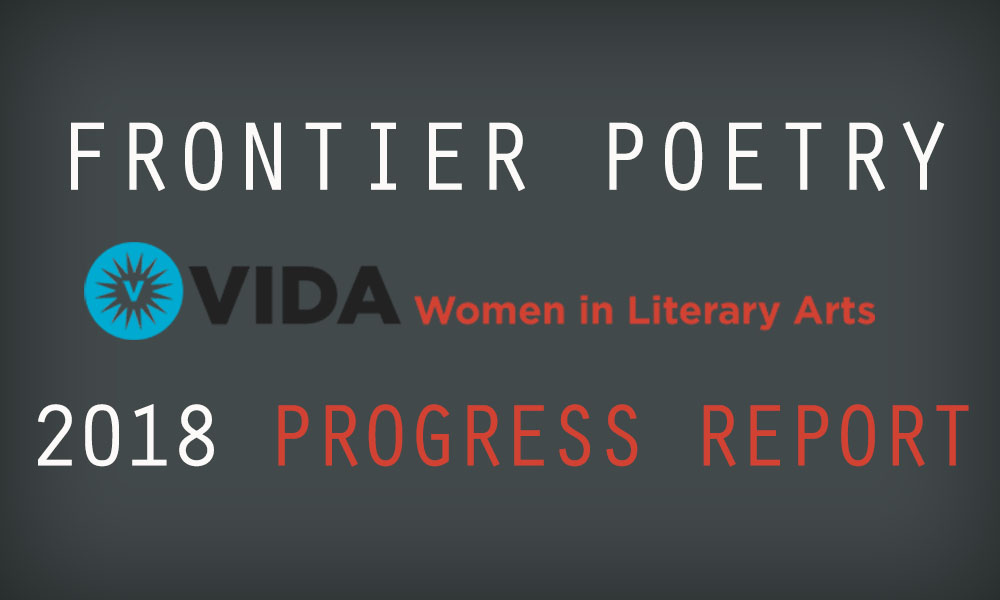Frontier Poetry VIDA-Style 2018 Progress Report

Inspired by annual the VIDA Count, we want to have transparency for ourselves, our poets, and our readers. We’ve done an internal audit around issues of representation on our platform, and we are proud of the direction that Frontier is heading according to these numbers. Accurately reflecting the reality of diversity—and uplifting emerging voices from under-represented communities—is at the core of our mission at Frontier.
We have published one poet a week, every week of 2018, not counting our contest winners. With a few reprints and holidays, that’s a total of 90 new voices published for all of 2018. We have gathered information for this progress report based on the bios provided by our poets and public information available. Our associate editor Maribel Pagán researched and assembled the data.
Gender Representation
2018 was an excellent year for gender parity at Frontier. Women represent 47 or 52.2% of our poets. Forty of our poets are men, at 44.4%, and 3 identify as non-binary at 3.3%.
Compare with POETRY: 50% women, 49% male, 0.2% non-binary in 2017.
Women of Color Representation
At least 18 of our women poets are women of color, 38% of women published. Of our total poets in 2017, at least 20% of them are women of color. This is a little lower than last year, and it will be a priority in 2019 to bring the number back up.
POETRY had the highest of the magazines reviewed by VIDA with 37% of their respondents identifying as women of color.
Hispanic/Latinx Representation
We published at least 12 authors who identify as hispanic or latinx, at 13.3% of our total.
Though VIDA does not yet survey for hispanic/latinx, we hope these numbers are going up for everyone across the industry.
Non-binary Representation
3 of our poets self-identify as non-binary, 3.3% of our total poets published. Though the percentage is down from the previous year, the actual number has increased. It will be a priority in 2019 to bring that number even higher.
In their survey, VIDA were again disappointed in the numbers of non-binary authors published in the larger literary landscape. Though the number of magazines publishing non-binary authors has increased, they all average at one by-line per magazine.
Sexuality Representation
13 of our poets identified as Queer or not straight in their bios, for 14.4% of our total.
At 11%, VIDA found that the Boston Review had some of the best representation of non-straight writers in 2017.
Maribel Pagan
Maribel C. Pagán is a Latina writer. She has appeared in Gone Lawn, Foliate Oak, 7x20, Cuento, and others. Visit Maribel at http://therollinghills.